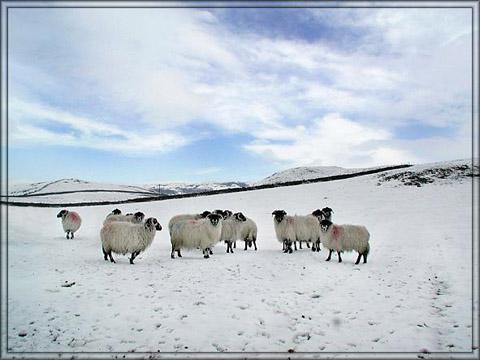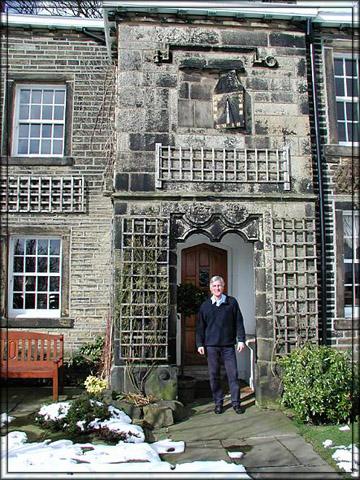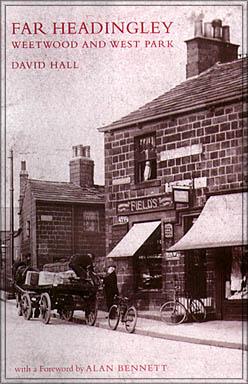March 2001

The Moors above Settle
After last year’s meteorological excesses we’ve had a lovely winter. Last month we had two weeks of bright cold clear sunny days followed by a sizeable snowfall and severe frosts so that now in the first week of March snow lies on the ground everywhere. At times it’s been difficult to get around; one lesson I’ve learned is that next time I’ll get a front wheel drive car. Not being able to collect my younger son from Harden above Bingley in my own car was at the least irritating. Despite the bitter cold the snowdrops are now indicating the imminence of spring; soon the daffodils will be trumpeting its arrival. The days are getting longer and winter will soon struggle to maintain its grip.
At half term, before the countryside was closed as a result of the foot and mouth disease outbreak, we stayed at a farmhouse in the hills above Bala in North Wales. We visited Portmeirion, the ice-cream coloured Italianate village on the coast. The Prisoner was filmed there back in the sixties before the village was even completed. We also climbed the ramparts of Harlech Castle, one of fourteen castles built by Edward I in the late thirteenth century to cow the Welsh. It was good to get away from routine, work and the city for a few days. But there was no central heating and the boys aren’t used to that. ‘I can see my breath in the bathroom’ said the elder one astonished and clearly horrified. ‘I’m not having a bath till we get home’ said the younger. Well, no change there.
| For my birthday, knowing what a bore I am about
Yorkshire, my wife gave me Nikolaus Pevsner’s West Riding, in the Buildings
of England series (2nd edition 1967). The first thing I did was to
look up the places I know and I was fascinated to find reference to my
brother’s house in Warley just outside Halifax. The porch of the house dates
back to 1633 and above it is a most unusual sundial fixed to the wall and
erected in 1637. Not surprisingly, there is no older sundial in Halifax. This
caused me to ask my brother more.
The foundations of the original house on the site were laid in 1588, the year Sir Francis Drake and his colleagues sent the Spanish Armada packing. The house was rebuilt in 1633 by the Oldfield family who owned it for the next 350 years. The house was again rebuilt in the 1740s and its gentrification involved the removal of the original mullioned windows to be replaced by more desirable sliding sash windows. It’s a fine house built of millstone grit. Inside are traces of its farmstead history like a rare seventeenth century beehive bread oven. Halifax is renowned for Crossley carpets, the business established in the nineteenth century by John Crossley who married Martha Turner, who at 14 years of age was working as a maid in the house. |
Richard Brearley beneath the sundial |
Some Halifax Antiquarian Society Papers dated 1915 end a piece about the house as follows: ‘Here we finish our story and salute the old …porch and sundial which have weathered close on three centuries of stress and storm through periods of darkness and progress and seen the building of a nation, the greatest and noblest in the annals of the world’. Autre temps, autre moeurs. From my brother’s garden he can look ten miles across the valley to the Pennine Hills with the wind blowing as it has blown for centuries and at a view which is still essentially as it was when the house was built.
All places have a story to tell. We must be grateful to those who tell that story. A friend of mine, David Hall, has recently produced a book ‘Far Headingley, Weetwood and West Park’, about that part of Leeds north of Headingley itself. Those of you who aren’t sure whether they quite know where that is may be helped if I mention the Cottage Road cinema, the Three Horseshoes, St Chad’s Church, Bryan’s fish and chips shop, Moorlands School and the Hollies. David recounts the history of the area from its medieval origins to its Victorian growth when it ceased to be largely open farmland centred on two hamlets and became instead the target of speculative development. Then of course in the twentieth century the growth continued as wealth increased and the motor car came in so many ways to dominate life.
|
|
The foreward to the book is written by Alan Bennett, the
Alan Bennett, who lived in Far Headingley from 1946 until 1957. His father
had the butcher’s shop at 92A Otley Road at the bottom of Weetwood Lane near
the Three ‘Shoes. In the foreward he writes: ‘I’m glad that so much of
the area has survived and that it’s more valued for its character and
interest now than it ever was then. Leeds is full of such submerged villages.
Armley, Bramley and Kirkstall are others, with buildings often of remarkable
antiquity and it’s right that their history should be told as David Hall
tells Far Headingley’s here’. David’s book is generously illustrated and
is informed without being stuffy; anyone interested can contact him at david@mazebrook.freeserve.co.uk
Picture shows the front cover of David Hall's book |
You are probably aware of the frightful freak railway accident on the main east coast line between Selby and Doncaster. As a result of a Landrover coming off the motorway, a 125 high-speed passenger train collided with a goods train and at least 10 were killed and 70 seriously injured. The accident happened in the village of Great Heck. As so often in extreme circumstances, the Yorkshire emergency services were fantastic and the local people rose to the occasion helping victims all they could. It was an awful accident by any measure but, as was pointed out, we should remember that ten people, often children, die on our roads every day and no one really seems to care much about that. Great Heck. I’d never heard of it before. What a lovely name for a village in Yorkshire.
The best drama on TV at present? No doubt about it – The West Wing on Channel 4. We love it. You didn’t really expect me to say Last of the Summer Wine, did you? Or Emmerdale?



